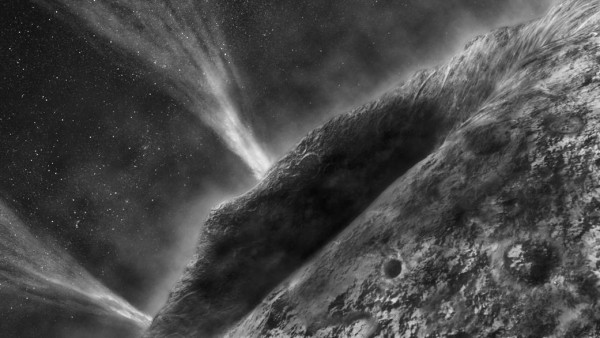By Ana Verayo, | October 31, 2016

NASA's Stardust spacecraft made a close flyby of comet Wild 2 in Jan 2004. (NASA/JPL-Caltech)
NASA has announced that a large asteroid passed close to Earth on Sunday night, and fortunately the asteroid was within a safe distance, according to data from NASA's new program to detect potentially near and dangerous asteroids.
NASA's NEA (Near Earth Asteroid) Scout program is now being tested at NASA's Jet Propulsion Laboratory in California, alerting scientists using data obtained from different telescopes around the globe. When Scout detects a potential asteroid near our planet, it makes a quick calculation to assess Earth's risk along with the help of other telescopes by making additional observations to confirm any real risk.
Like Us on Facebook
According to astronomer Paul Chodas from NASA's Jet Propulsion Laboratory, there are several telescopes located around the world that scan the skies every night to hunt for near-Earth objects.
Chodas explains that when a telescope detected a moving object near Earth, initially it is considered as a dot moving in the skies, as you have no idea how far it is. More telescopes observing means more data obtained and the more information you get, you can estimate its size and the direction it is heading. Sometimes there is not enough time to make such observations.
According to Davide Farnocchia, who is a navigation engineer at NASA's Jet Propulsion Laboratory, objects can appear close to Earth after they are discovered, which can take a day or two or even a matter of hours. However, the main goal of Scout is to speed up this confirmation process.
The space rock that whizzed by on Sunday night was first detected betweeb October 25 and 26 by the Pan-STARRS (Panoramic Survey Telescope & Rapid Response System) in Hawaii. After just a few hours, new details of this object was updated on the Smithsonian Astrophysical Observatory's Minor Planet Center website.
NASA's Scout program analyzed this data from the telescope and determined that the asteroid was indeed headed for our planet but would miss it by 310,000 miles.
Additional data and observations supported this confirmation from telescopes at the Steward Observatory, Tenagra Observatory and Spacewatch in Arizona. This space rock passed by Earth within a safe distance. This object is estimated to measure about five to 25 meters across.
NASA's Scout program is still being tested. It is scheduled to be fully operational by the end of this year.
-
Use of Coronavirus Pandemic Drones Raises Privacy Concerns: Drones Spread Fear, Local Officials Say

-
Coronavirus Hampers The Delivery Of Lockheed Martin F-35 Stealth Fighters For 2020

-
Instagram Speeds Up Plans to Add Account Memorialization Feature Due to COVID-19 Deaths

-
NASA: Perseverance Plans to Bring 'Mars Rock' to Earth in 2031

-
600 Dead And 3,000 In The Hospital as Iranians Believed Drinking High-Concentrations of Alcohol Can Cure The Coronavirus

-
600 Dead And 3,000 In The Hospital as Iranians Believed Drinking High-Concentrations of Alcohol Can Cure The Coronavirus

-
COVID-19: Doctors, Nurses Use Virtual Reality to Learn New Skills in Treating Coronavirus Patients








